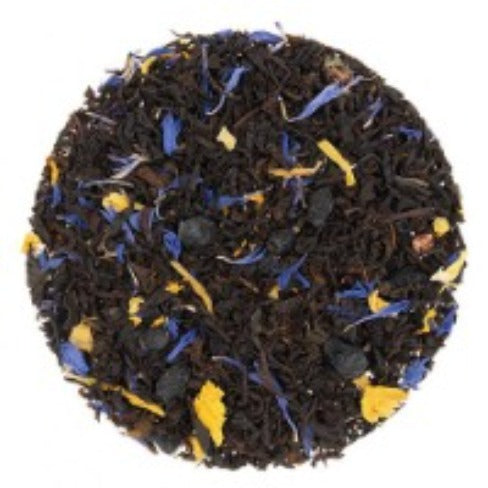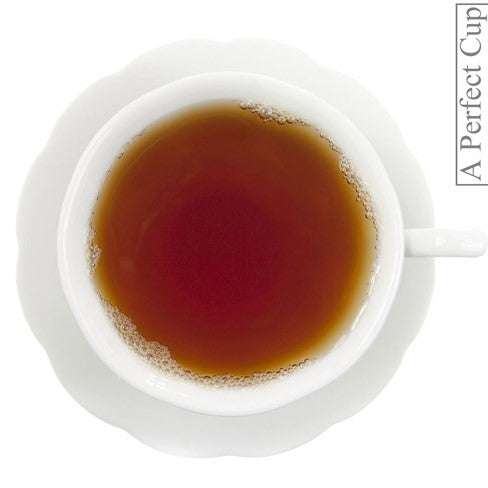Elora Tea
Maple
Maple
Couldn't load pickup availability
Sweet with piquant caramel notes. A bright, coppery infusion with a unique maple flavor that complements the high grown Sri-Lankan black tea.
INGREDIENTS: Black tea, Maple syrup, Calendula + Sunflower petals, Natural flavors (organic compliant).
HEALTH PROPERTIES: High in anti-oxidants
CAFFEINE LEVELS: Medium
TEA SOURCING: Blended with teas from Sri Lanka (Nuwara Eliya, Dimbula and Uva regions), Kenya (Nandi Highlands), India (Nilgiri), Egypt (Nile Delta and Fayoum), and Poland (Gdansk)
ETHICS: Ethical Tea Partnership and GMO free
THE STORY OF MAPLE
North America's northeastern reaches were once completely covered by what is known in Canada as the Carolinian forest, and in the US the Eastern Deciduous forest. The native inhabitants who called this forest home learned to carve a living from its natural wonders. One of the most miraculous was the sap of the sugar Maple tree that dominated the forest. The indigenous peoples noticed that each spring, small animals would chew on the branches of the tree, seeking out the sweet sap. The First Nations devised a way to tap the trees by cutting notches in the bark to allow the sap to run out freely. This they would collect in pails and boil down to a thick, sweet Maple syrup.
When the first European settlers arrived in the 17th century, the indigenous peoples shared the knowledge of how to make the syrup. To this day, Canada and New England are renowned for this "wonder of the woods". We've captured this incredible flavour and added it to a luxury, high grown Sri-Lankan tea for a sweet cuppa that's second to none. Cheers!
What type of tea do we use, how do we flavor the tea and why do we use natural flavors?
Firstly... we only use high grown teas from the top 3 tea growing regions of Sri Lanka - Nuwara Eliya, Dimbula and Uva. These three high-grown districts produce flavorful teas that have classic 'Ceylon' tea character which is noted by floral bouquet and flavor notes, touches of mild astringency, bright coppery color and, most importantly - perfect for use as the base tea of our flavored teas. (We have tested teas from various other origins around the world as base stock for our flavored teas, but none of these teas made the grade.) Dimbula and the western estates of Nuwara Eliya have a major quality peak during Jan/Feb, whereas Uva and the eastern estates of Nuwara Eliya have their peak in July/Aug. This 'dual peak period' allow us to buy the best for our flavored tea blends several times during the year, ensuring top quality and freshness.
Secondly. we use flavoring oils not crystals to give the tea drinker an olfactory holiday before indulging in a liquid tea treat.
Thirdly... we specify natural flavors. High quality tea tastes good and natural flavors do not mask the natural taste of the high grown Ceylon tea. (The norm for many making flavored tea is to use overpowering artificial flavors, which can be used to hide lower quality tea). Natural flavors do not leave an aftertaste giving the tea a clean and true character. It should be noted that natural flavors tend to be somewhat 'soft ' and the flavors slightly muted, but for many this is a refreshing change and one of the desired attributes of our naturally flavored teas.
BREWING INSTRUCTIONS
BREWING INSTRUCTIONS FOR HOT TEA: Infuse one slightly heaping teaspoon for each 8 ounce cup with boiling water for 3-7 minutes.
Infuse 6 slightly heaping teaspoons of tea with 1 1/4 cups of boiling water for 5 minutes. Quarter fill a serving pitcher with cold water, and add the infused tea, straining the leaves, to the pitcher. Add ice and top-up the pitcher with cold water. Add lemon and sweeten to taste. A rule of thumb when preparing fresh brewed iced tea is to increase the strength of hot tea since it will be poured over ice and diluted with cold water.
Infuse 1 slightly heaping teaspoon of loose tea with 6 ounces of boiling water for 5 minutes. Add the tea to a 12 ounce glass, filled with ice, straining the leaves. Add hot tea to a 12oz/375ml acrylic glass filled with ice, straining the tea or removing the bags. Add lemon and sweeten to taste.
NUMBER OF CUPS: 15-20 cups from each 50 grams of tea, with a single use of the leaves. Loose leaf tea is traditionally infused 3 times, with a different flavor profile following each infusion. Accordingly, each 50 gram bag can make up to 60 cups of tea.
Share



